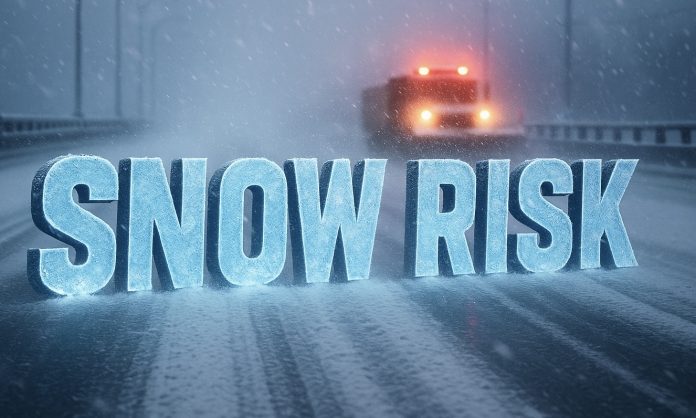Indianapolis, IN – Indiana could be in for a harsher winter than usual, with the 2025-26 Winter Weather Outlook pointing to a higher-than-normal risk of heavy snowfall and disruptive storms from December through February.
According to the National Weather Service (NWS) Climate Prediction Center, weak La Niña conditions are forming this fall, expected to shift toward a neutral pattern mid-winter. Historically, these setups often bring colder air masses and stronger storm systems across the Ohio Valley and Great Lakes, raising the odds of heavier snowfall across Indiana.
Meteorologists stress, however, that the seasonal forecast carries uncertainty. Short-term climate drivers—including the Arctic Oscillation (AO) and Madden-Julian Oscillation (MJO)—can cause rapid shifts in storm activity. These patterns may turn quiet stretches into weeks of frequent snow or flip a mild spell into sudden blasts of arctic cold.
Even with these variables, the potential for above-average snowfall is clear. Northern Indiana, including South Bend and Fort Wayne, may see significant totals boosted by lake-effect snow off Lake Michigan. Central Indiana, including Indianapolis, could face stronger winter storm systems delivering several inches at a time. Southern areas such as Evansville may experience more wintry mix events, though forecasters warn that heavy snow systems remain possible.
Historical trends in similar winters show wide variability, with totals ranging from 20–30 inches in lighter years to more than 60 inches in snowier seasons. That range underscores the difficulty of long-term forecasting but reinforces the need for Hoosiers to be prepared.
Travel impacts could prove especially disruptive. Major highways including I-65, I-69, I-70, and I-74 often become bottlenecks during heavy snow events. Commuters and freight traffic alike may face closures, spinouts, and hours-long delays. Officials caution that January and February are the peak storm months, when the chance of blizzard-like conditions is greatest.
The official NWS winter forecast will be issued October 16, but emergency managers recommend taking steps now. Residents are urged to service furnaces, stock up on salt and snow shovels, and ensure emergency supplies are on hand. Drivers should keep vehicles winter-ready and carry blankets, food, and water in case of breakdowns or closures during severe weather.




